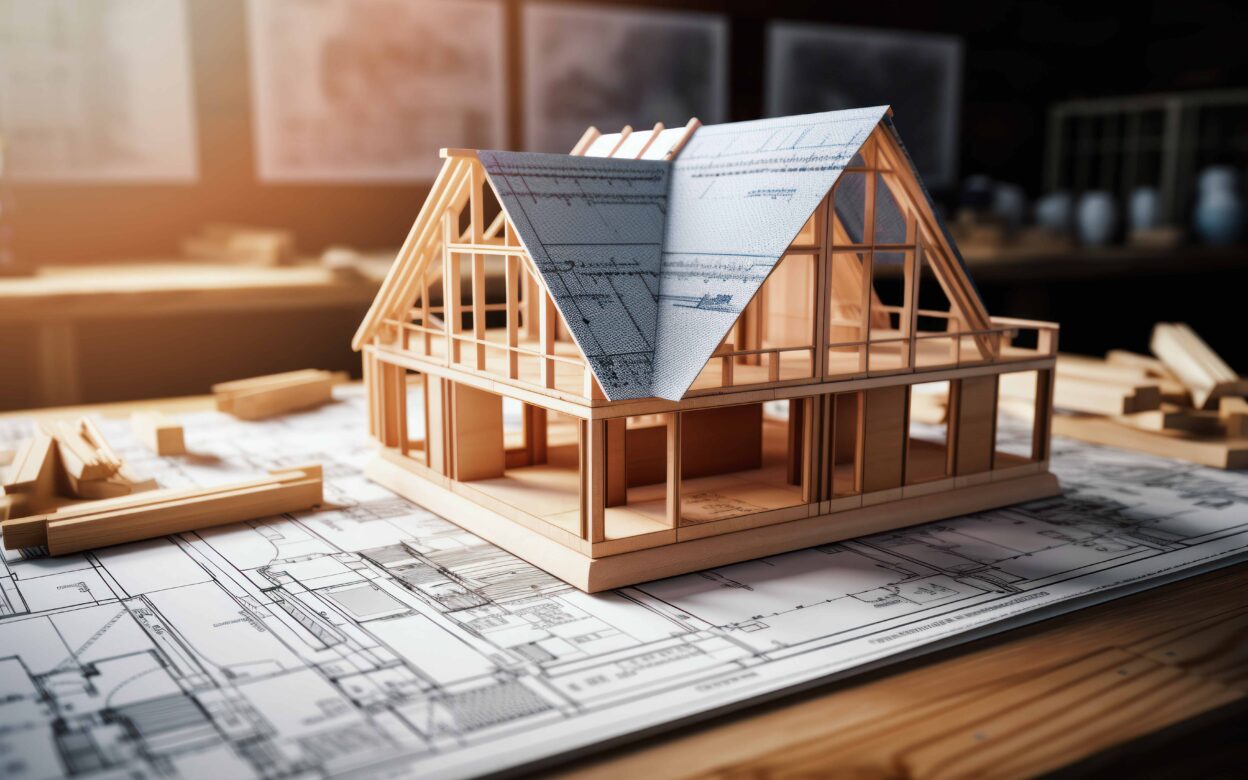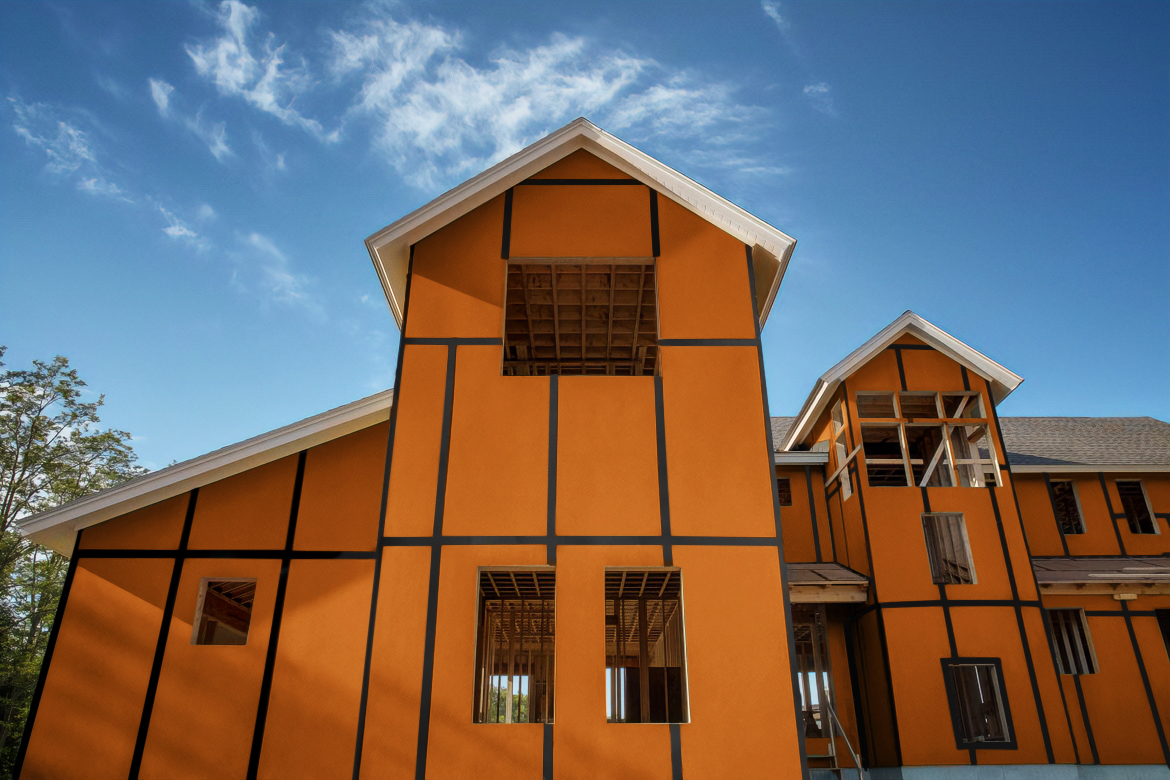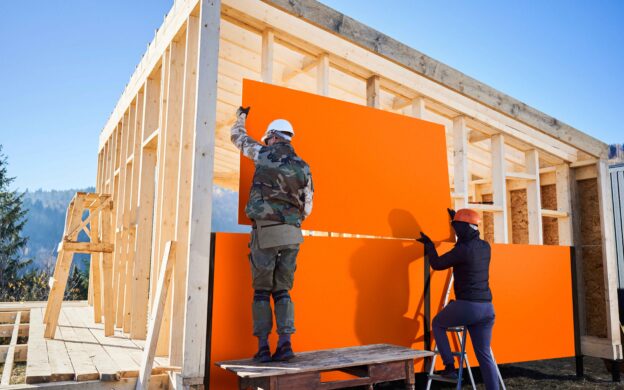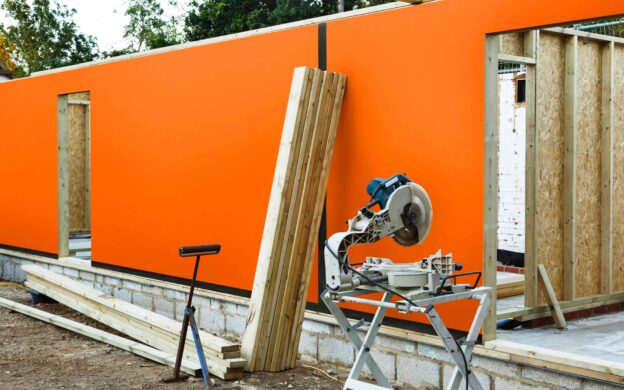
Meeting net zero targets in the built environment requires looking beyond just the operational performance of buildings. We must consider embodied carbon across the building life cycle, and a key part of that is using materials as efficiently as possible and reducing waste.
Modern methods of construction (MMC) have a significant role to play in achieving that efficiency. Among the broader definitions of MMC is finding ways to perform traditional site processes within controlled factory environments. Timber framed housing solutions lend themselves particularly well to modular and offsite construction, helping to save on site-based waste management procedures.
Why is waste such a problem in the construction industry?
Whether talking about waste generally, or specific types of waste like plastic, it’s first helpful to understand the overall problem our industry has with waste.
According to government figures, in 2018 construction and demolition waste alone accounted for some 30% of all the waste generated in the UK. That is 68 million tonnes, of which 5 million tonnes was sent to landfill.
While the other 92% of that waste was recovered, one of the most common outcomes is for it to be downcycled. In other words, although the waste is processed in some way, it is turned into a material of lower value than it started out. Materials cannot be downcycled indefinitely, and downcycling can only be viewed as delaying the inevitable of a material no longer being recoverable.
A surprising aspect of construction waste is how much of it comes from new-build projects. Materials are over-ordered, not used, and then simply disposed of because there is no process in place for connecting unused materials with other projects that could benefit from them.
All of this points to an overarching issue: the construction industry often places very little value on the materials it uses day in, day out. If steps were taken to recognise and appreciate the true cost of materials, then contractors could immediately improve their productivity and profitability simply through more efficient material use.

Using MMC to tackle construction waste and reduce embodied carbon
Another advantage to construction projects using only the quantities of materials they actually need is that raw material use could be cut by a third by 2035. The knock-on effect of this would be significant savings in upfront carbon, which typically accounts for the highest proportion of life cycle carbon.
Taking all of this into account, relevant potential benefits of offsite manufacture and MMC are two-fold.
First, is the careful control and ongoing refinement of manufacturing processes to procure and use materials as efficiently as possible. The more manufacturing and construction that takes place offsite – reducing on-site operations, time and labour – the greater the potential carbon savings.
Second, is the advantage of factory-based waste management compared to site-based waste management. According to a report by the BRE-managed BeAware project, “it is easier to manage waste in a factory environment than on a construction site.”
Both benefits are significant, as construction projects increasingly adopt targets for embodied carbon and diverting waste from landfill.
Reducing plastic-based solutions in timber framed housebuilding
Timber-framed housebuilding commonly employs plastic-based housewrap solutions to provide weather resistance, airtightness and vapour permeability. These solutions are often installed on site, needing careful detailing to avoid rips and tears and prevent dirt and moisture entering the timber frame system.
Cutting housewraps on site can generate plastic waste, typically in the form of high-density polyethylene (HDPE). HDPE is widely used in all aspects of life and recycling processes are well-established and relatively mature. Volumes of HDPE sent to landfill are decreasing, demonstrating the effectiveness of policies to divert waste from landfill. However, waste must be segregated at source and specialist commercial waste collection arranged.
An alternative to traditional housewraps is Arctek® Dryshell™, offered by Arclin. As an integrated vapour-permeable overlay for OSB sheathing boards, Arctek® Dryshell™ removes the tricky installation details associated with more traditional housewraps, reduces the time and cost of installing timber frame solutions on site, ensures that no moisture can get into the structure and reduces site waste.
Timber framed housing manufacturers and suppliers can make improvements to the production of their timber frame cassettes or SIP panels, and take greater advantage of the growing timber frame market in the UK.
Arctek ® Dryshell™ is ‘fused’ to the cassette or panel, so the timber frame structure has the overlay in place when it arrives on site. It removes that element of installation entirely from on-site operations, saving time and money through reduced labour. By adopting offsite production techniques, it helps to result in a more efficient build overall – and with no plastic waste generated on site.
To find out more about how Arctek® Dryshell™ can benefit your timber frame projects, request a sample or talk to us.


